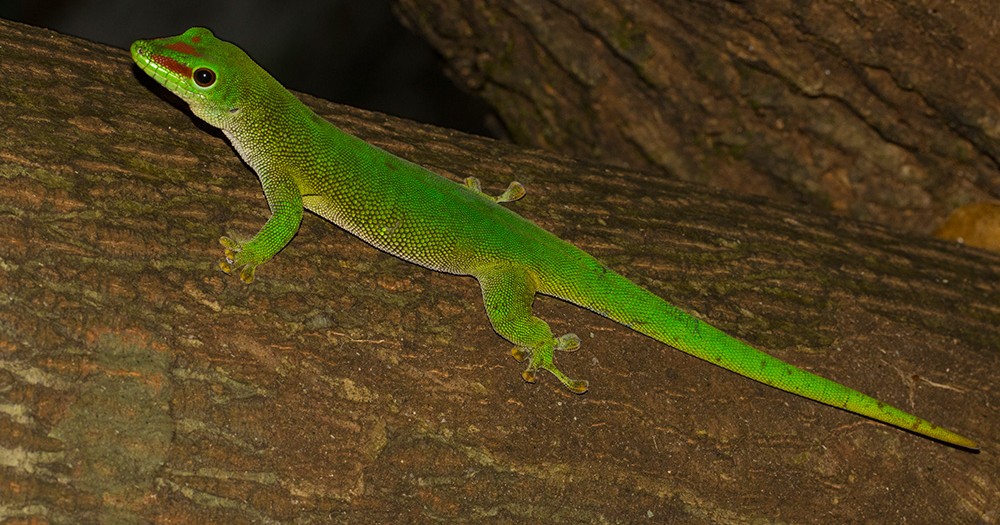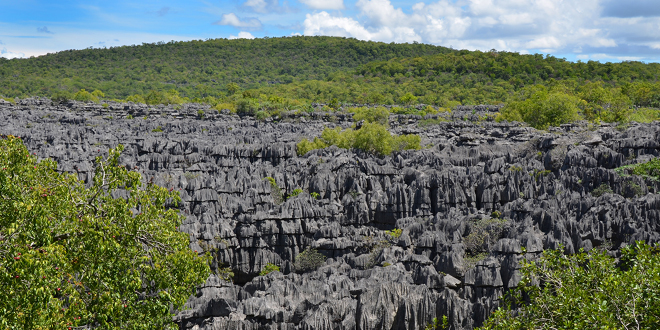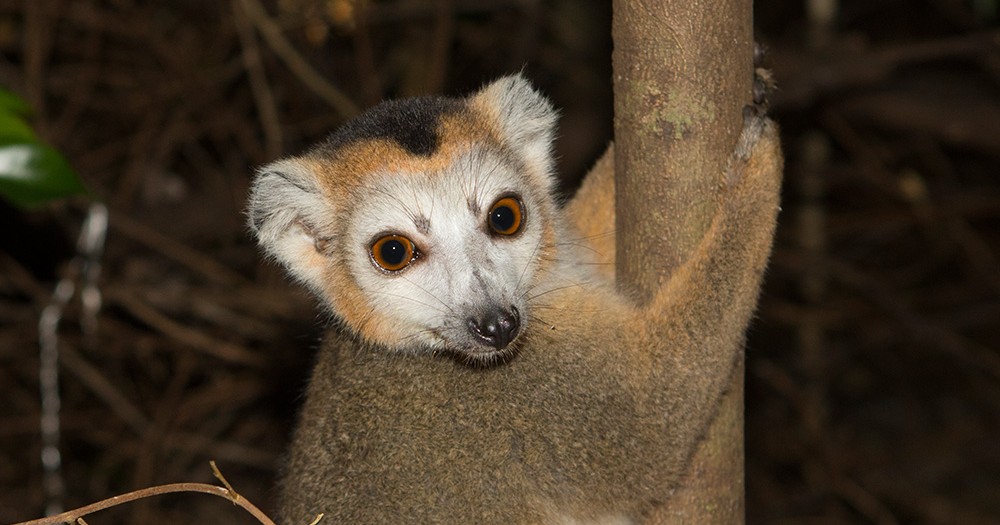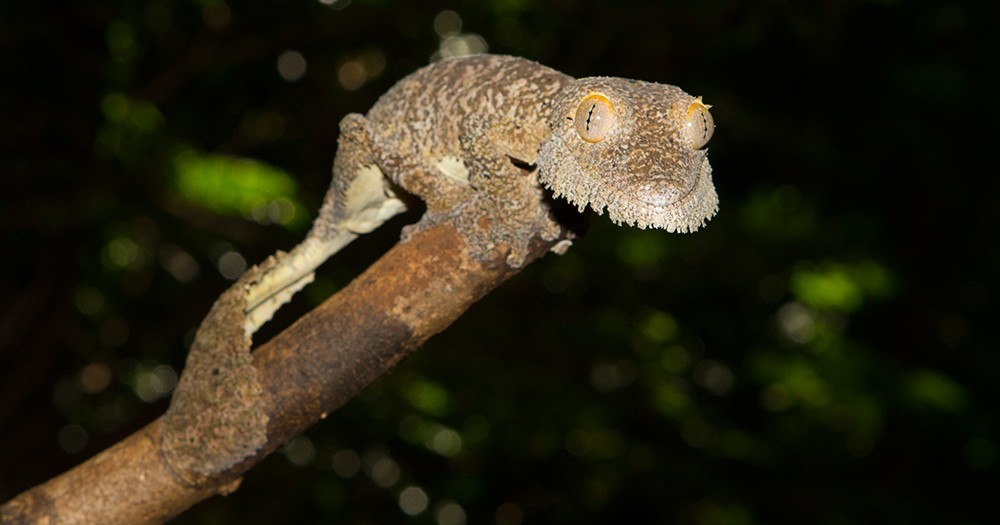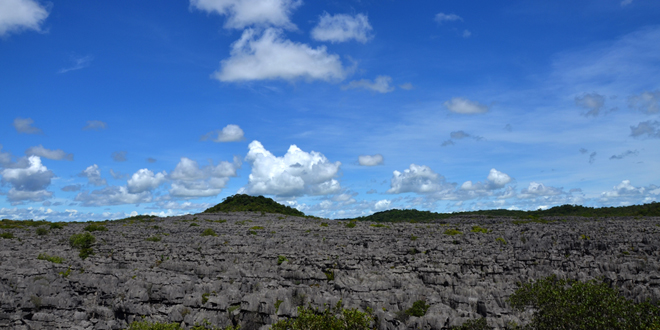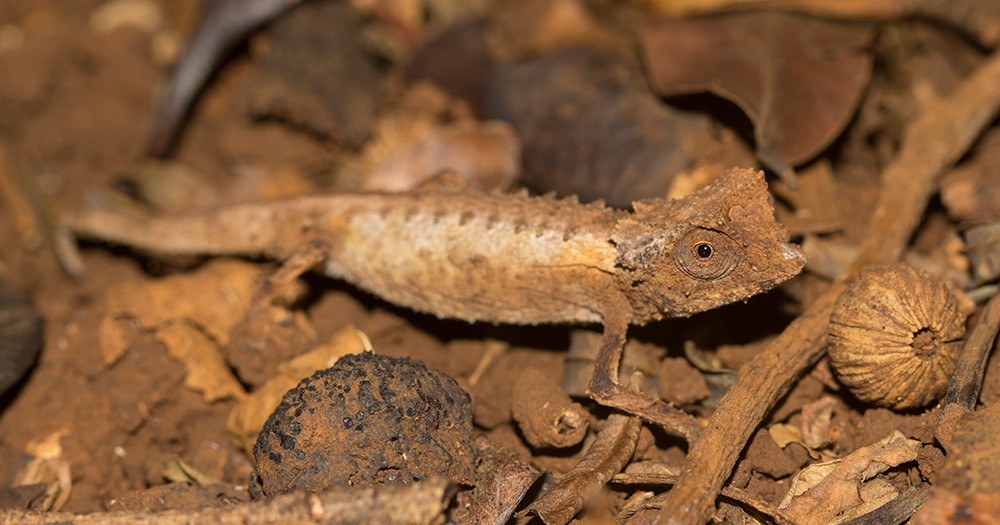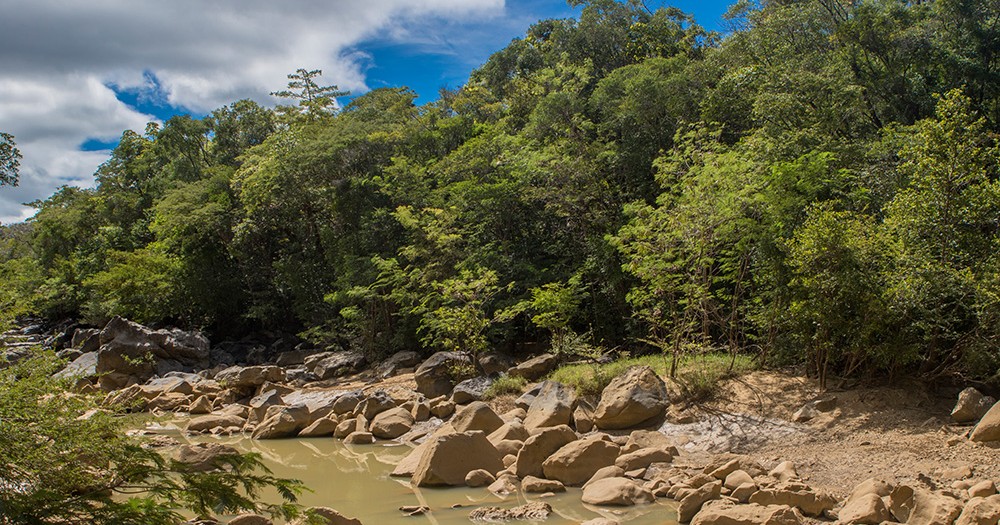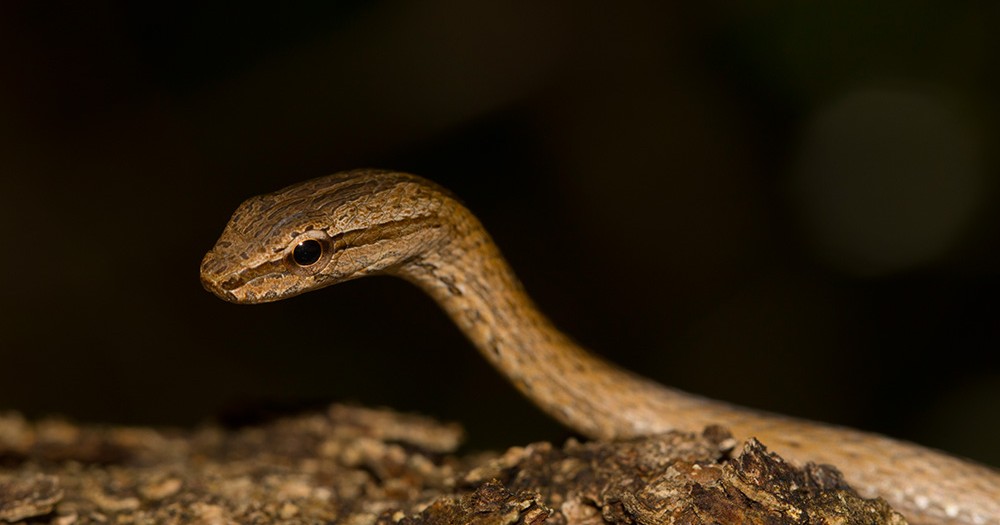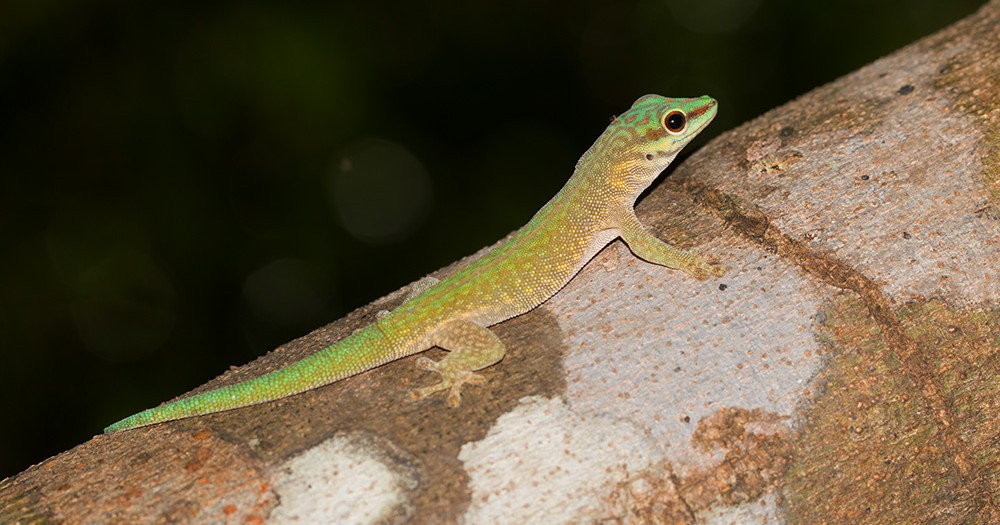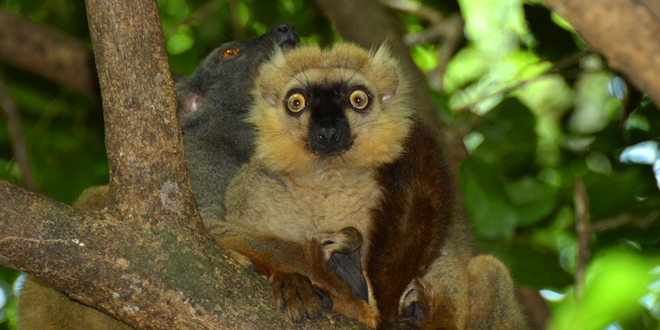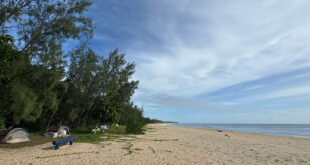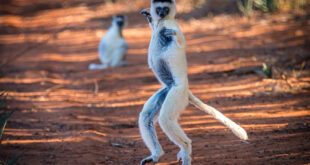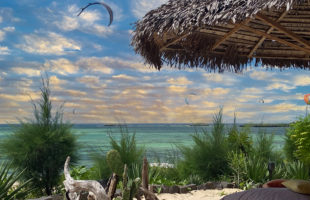Ankarana:
Ankara is derived from the name of the population living there, the Antankarana. Antankarana means “the people from the rocks”, which refers to the Tsingys typical for the special reserve.
Location:
Ankarana is located on the RN6, just 110 km south of Antsiranana (Diego Suarez) and about 35 km north of Ambilobe, in northern Madagascar. The reserve is only about 100 km away from the Amber Mountain National Park.

By car, you can reach Ankarana from Antsiranana in about 4 hours. Some small taxis also drive there, Taxibrousses run with less comfort and safety. Antsiranana has an airport from which domestic flights to the capital Antananarivo are offered several times a week. From Tana by land, it is about 1000 km to Ankarana.
Information about the national park:
The approximately 182 km² Ankarana Special Reserve, founded in 1956, is famous above all for its Tsingy: razor-sharp limestones that tower over huge areas close to the sky at a height of several meters. They are remnants from the Jurassic and otherwise only occur in Tsingy de Bemaraha and Tsingy de Namoroka National Parks. The Malagasy word mitsingytsingyna means “walking on tiptoe”. One of the several hours of hiking trails to and along the Tsings, which leads to two small, very safely paved suspension bridges, is recommended. From the highest point of Ankarana Special Reserve, you can see the whole park up to the Mozambique Channel.
The Tsingy separate the park in two, a dry savannah landscape and a dry forest. The park offers a variety of hiking routes, from one to six hours of difficulty for every traveler. Crossed by numerous gorges and rivers, Ankarana also has Africa’s largest interconnected underground cave network with a total length of 120 km. Some of the caves can be visited, others are fady (sacred or taboo). A special feature of the Reserve is the “perte des rivières” (“the river hole”), a huge stone hole in which several rivers merge and continue underground. The rivers only carry water during the rainy season, so that this small wonder of nature, as well as some river beds, can be visited safely during the dry season. Since 2023, Ankarana has been a UNESCO World Heritage Site.
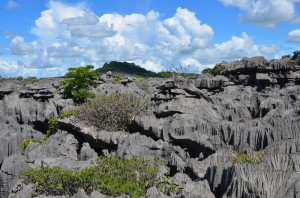
Climate:
Ankarana has a hot, tropical climate. The temperatures are often well above 30°C. The heat makes even easy walks in the Tsingys fast to a sweaty tour, the forest offers however sufficiently shady cooling. April to August, the dry season, is the best season to visit this Reserve.
Infrastructure:
Despite its good location, Ankarana Special Reserve has not yet been fully developed for tourists. Accommodation of very moderate-quality can be found in nearby Ambilobe, in Ambanja, or better in Antsiranana (Diego Suarez), a little further away. Directly in the park, there are two small campgrounds with simple toilets, but without electricity or water, but all the more mosquitoes. The local guides can arrange picnics or lunch on request so that you can enjoy the whole day in the Reserve. The eastern entrance of the park is located in the east in the village of Mahamasina, where there are ten very spacious, simple bungalows at Chez Laurent. Just a few kilometres from Mahamasina is Ankarana Lodge, which offers more sophisticated bungalows and a pool.
Flora and Fauna:
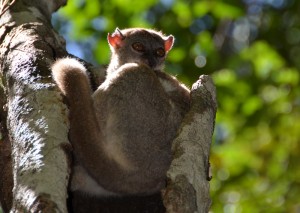
The caves of Ankarana as well as the Tsingys offer only specialized animals and plants a peculiar habitat. In the caves, you can find blind fish and crabs, arachnids and bats. Eleven species of lemurs live in the dry forest and also between the Tsingys, including the Crowned Lemur, the Sanford’s lemur (Eulemur sanfordi) and the nocturnal Ankarana sportive lemur, as well as about 100 species of birds. Crowned and Sanford’s lemurs can be observed outstandingly with the picnic on the Campgrounds since the curious animals understood fast that in the proximity of eating tourists sometimes also bananas and other delicacies can be dusted.
If you take a closer look, you will also find many of the approximately 60 reptile species, for example, the panther chameleon or the Bright Eyed Leaf-tailed Geckos (Uroplatus garamaso), which are usually nestled upside down on tree trunks and haven’t been named until 2023. Only another few years ago, a smaller leaf-tailed gecko, Uroplatus fetsy, was discovered in Ankarana. In one of the caves live Nile crocodiles (Crocodylus niloticus). Day geckos (Phelsuma abotti, Phelsuma grandis and Phelsuma roesleri) whizz rapidly over tree trunks and branches, and the most different snakes like the golden hook nose snake (Leioheterodon modestus) or the four-striped Dromycodyras quadrilineatus live in the foliage. If you look very closely, you may even find the leaf chameleon Brookesia confidens. It is part of a group that belongs to the smallest chameleons of the world.
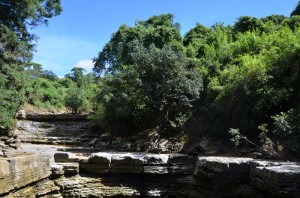
The flora has also adapted to the special life. In the Reserve, photographers and nature lovers will find endemic Baobabs (Adansonia madagascariensis), “peeling” Commiphora trees, between the Tsingys Euphorbia with red flowers or Adenia, a balloon-like water-storing plant. Pachypodium decaryi and Pachypodium rutenbergianum are also native to Ankarana.
The dry forest of Ankarana may sometimes be a bit more difficult to find animals than a rainforest, but it offers a lot of very special natural gems.
 MADAMAGAZINE Your Magazine about Madagascar
MADAMAGAZINE Your Magazine about Madagascar
